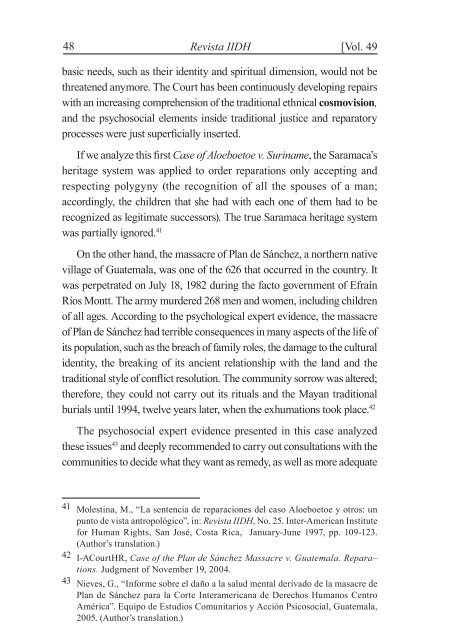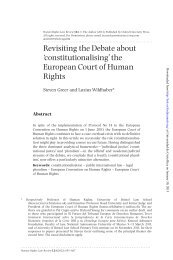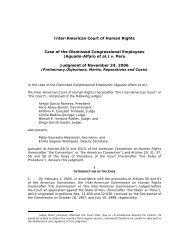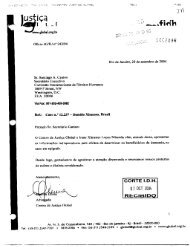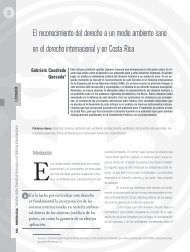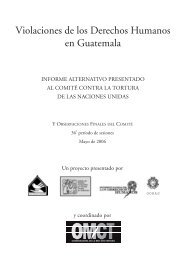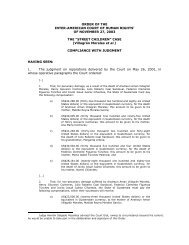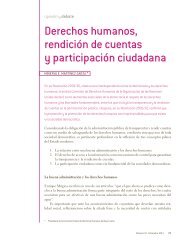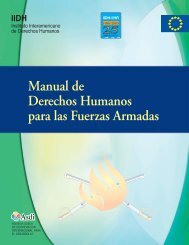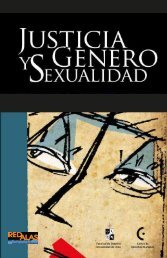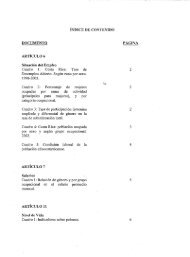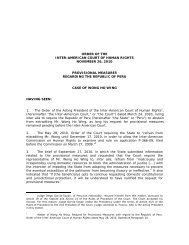Inter-American Court of Human Rights' reparation judgments ...
Inter-American Court of Human Rights' reparation judgments ...
Inter-American Court of Human Rights' reparation judgments ...
- No tags were found...
Create successful ePaper yourself
Turn your PDF publications into a flip-book with our unique Google optimized e-Paper software.
48 Revista IIDH[Vol. 49basic needs, such as their identity and spiritual dimension, would not bethreatened anymore. The <strong>Court</strong> has been continuously developing repairswith an increasing comprehension <strong>of</strong> the traditional ethnical cosmovision,and the psychosocial elements inside traditional justice and reparatoryprocesses were just superficially inserted.If we analyze this first Case <strong>of</strong> Aloeboetoe v. Suriname, the Saramaca’sheritage system was applied to order <strong>reparation</strong>s only accepting andrespecting polygyny (the recognition <strong>of</strong> all the spouses <strong>of</strong> a man;accordingly, the children that she had with each one <strong>of</strong> them had to berecognized as legitimate successors). The true Saramaca heritage systemwas partially ignored. 41On the other hand, the massacre <strong>of</strong> Plan de Sánchez, a northern nativevillage <strong>of</strong> Guatemala, was one <strong>of</strong> the 626 that occurred in the country. Itwas perpetrated on July 18, 1982 during the facto government <strong>of</strong> EfraínRíos Montt. The army murdered 268 men and women, including children<strong>of</strong> all ages. According to the psychological expert evidence, the massacre<strong>of</strong> Plan de Sánchez had terrible consequences in many aspects <strong>of</strong> the life <strong>of</strong>its population, such as the breach <strong>of</strong> family roles, the damage to the culturalidentity, the breaking <strong>of</strong> its ancient relationship with the land and thetraditional style <strong>of</strong> conflict resolution. The community sorrow was altered;therefore, they could not carry out its rituals and the Mayan traditionalburials until 1994, twelve years later, when the exhumations took place. 42The psychosocial expert evidence presented in this case analyzedthese issues 43 and deeply recommended to carry out consultations with thecommunities to decide what they want as remedy, as well as more adequate41 Molestina, M., “La sentencia de reparaciones del caso Aloeboetoe y otros: unpunto de vista antropológico”, in: Revista IIDH, No. 25. <strong>Inter</strong>-<strong>American</strong> Institutefor <strong>Human</strong> Rights, San José, Costa Rica, January-June 1997, pp. 109-123.(Author’s translation.)42 I-A<strong>Court</strong>HR, Case <strong>of</strong> the Plan de Sánchez Massacre v. Guatemala. Repara–tions. Judgment <strong>of</strong> November 19, 2004.43 Nieves, G., “Informe sobre el daño a la salud mental derivado de la masacre dePlan de Sánchez para la Corte <strong>Inter</strong>americana de Derechos <strong>Human</strong>os CentroAmérica”. Equipo de Estudios Comunitarios y Acción Psicosocial, Guatemala,2005. (Author’s translation.)


